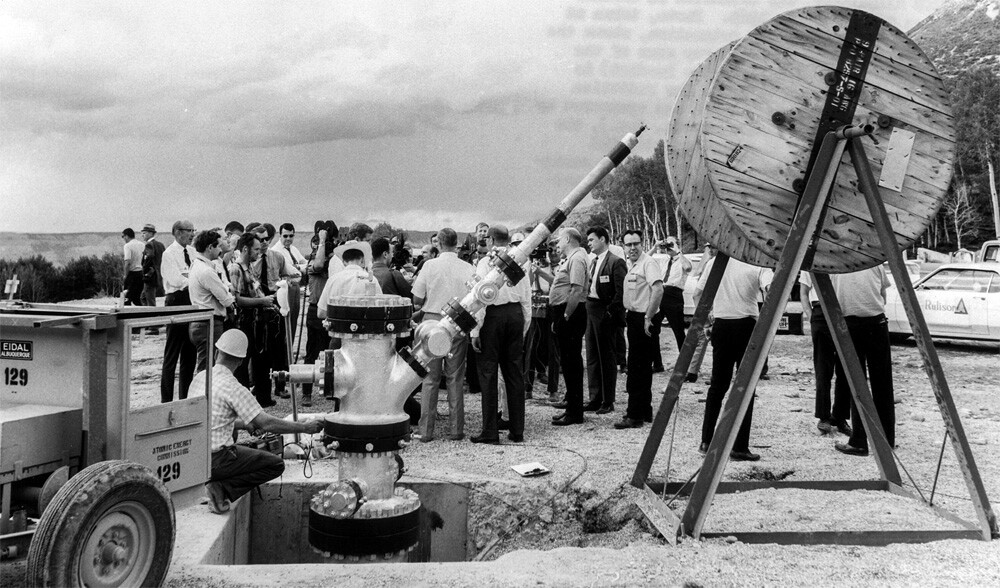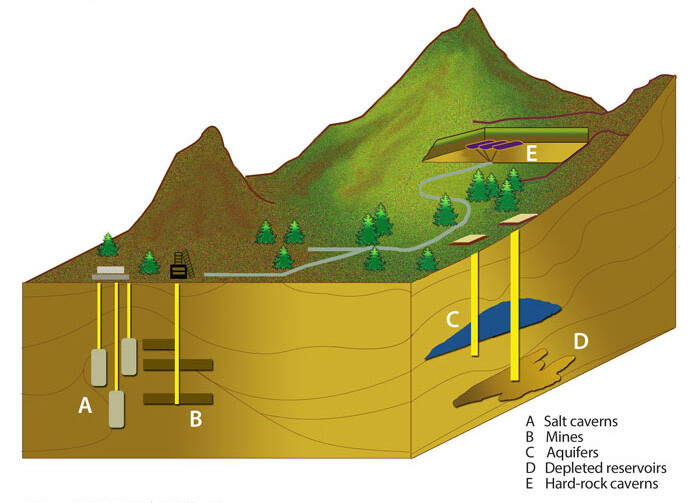You’d need more than 10,000 structures that size to store all this gas. While constructing them using conventional means wouldn’t be impossible, it sure wouldn’t be easy. So what we do instead is carve out that space underground. We pump water into massive salt deposits, the salt dissolves and that leaves huge caverns larger than any building. The result is kind of like sticking cheese in a cave, but rather than walking in and plopping stuff on shelves, the entire cavern is the storage tank.
We’ve previously told you about the plans to create such salt domes to store hydrogen gas (and we joked about how much fun it would be to light a match and watch it all explode). But this isn’t some new experiment people are trying out to take care of future energy needs. It’s something we already do with great success right now.
The only downside of making these reservoirs out of salt is that it gives us enormous volumes of brine, which we don’t know what to do with. We can use it for pickling fish, but a man can only stomach so much herring.
Project Rulison
The other half of the natural gas business — extracting the gas — is also hard, especially when the stuff is far out of reach. Today, you might know of one method of getting resources like that to flow more freely: fracking. In 1969, Colorado tried a more ambitious version of this. They were going to set off a nuke, underground.
The nuclear bomb would be 40 kilotons (the Hiroshima nuke blasted just 15 kilotons of energy). For safety’s sake, they ordered the whole area evacuated, but a few determined activists stayed put. So long as they remained there, they reasoned, there was no way the scientists would go through with it. Like most activists, they were wrong. The team detonated the nuke all right, letting loose a mini earthquake.

The explosion did not net any usable natural gas. In fact, any gas loosened by the nukes was radioactive, and burning such fuel on your kitchen stove would be inadvisable.
The government tried a couple more similar tests anyway, but in a sense, the activists won in the end. They passed an initiative called the Colorado Detonation of Nuclear Devices Amendment. That means today, it is officially illegal to detonate a nuke in Colorado unless you first get approval from voters. If you’ve been planning to set off any nukes yourself in Denver, be sure to complete all electoral measures beforehand, or else you may have to pay a fine.
Follow Ryan Menezes on Twitter for more stuff no one should see.

